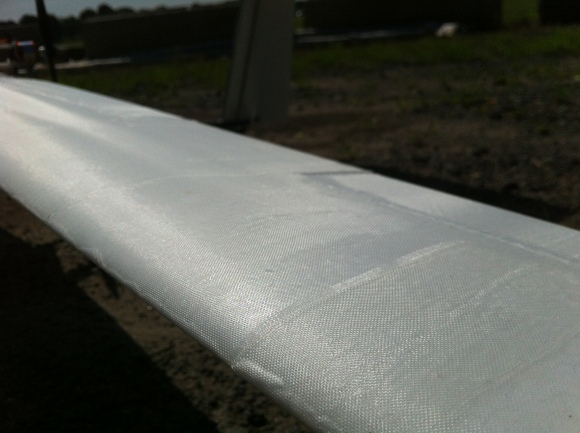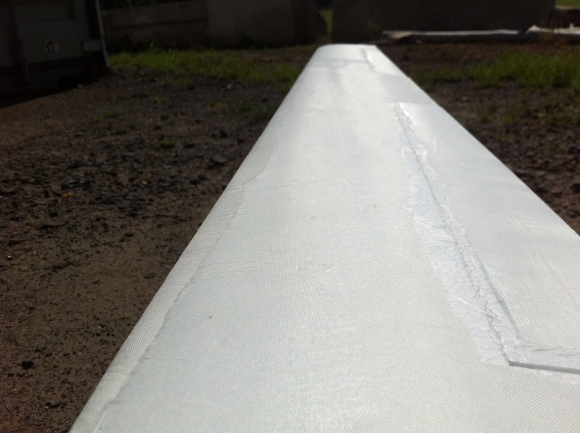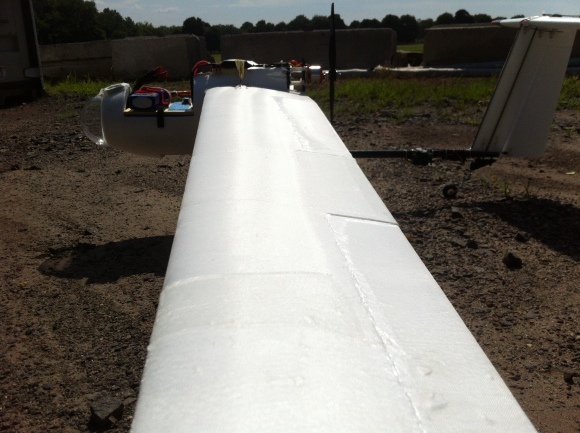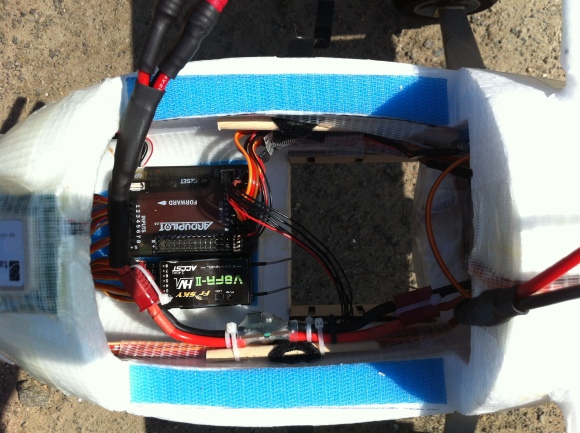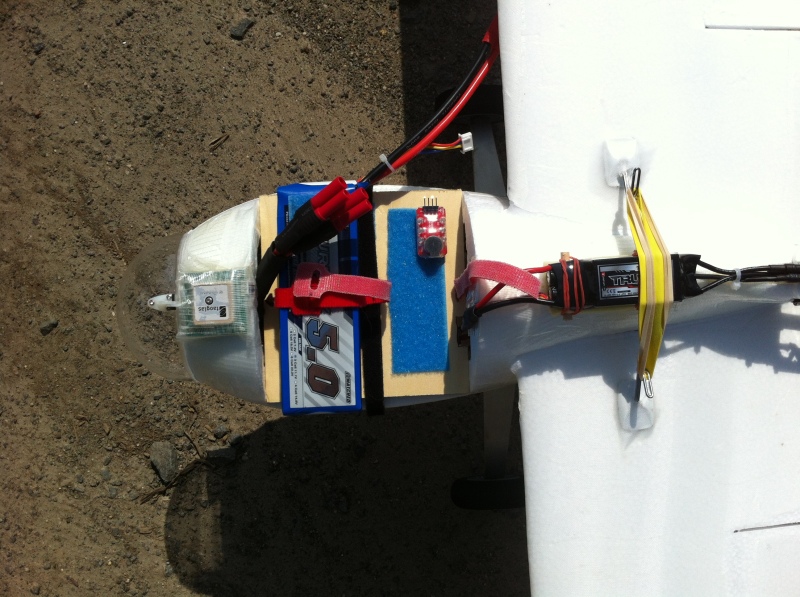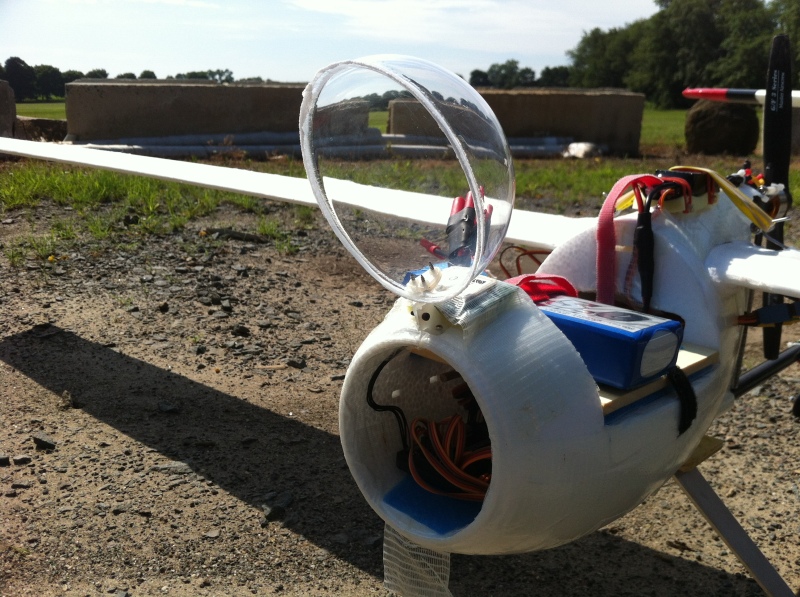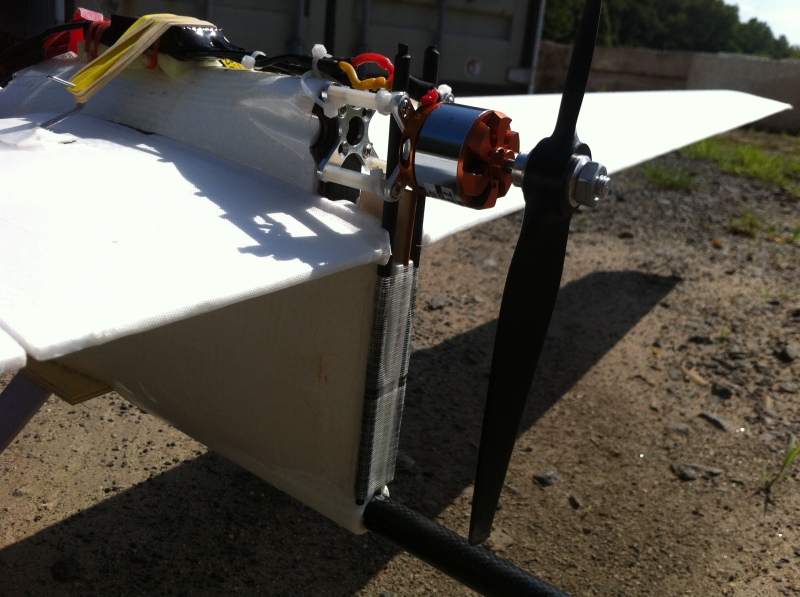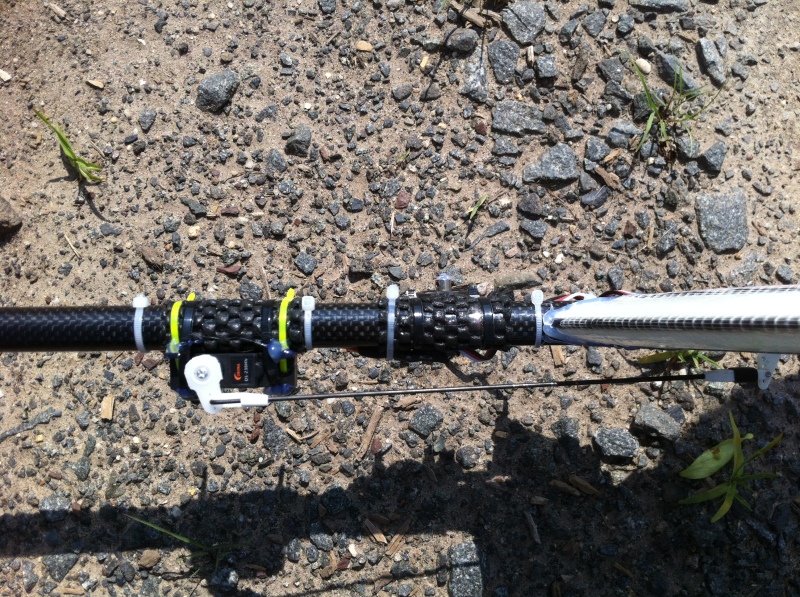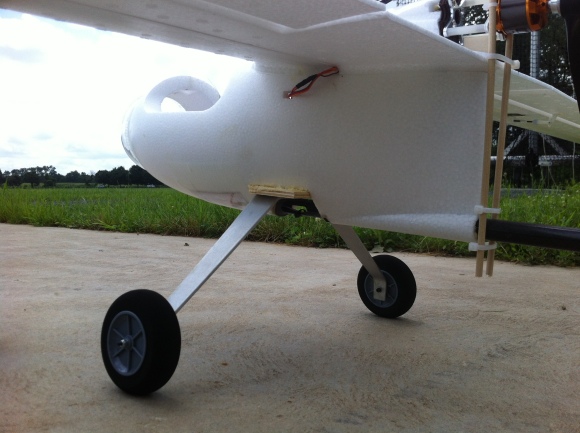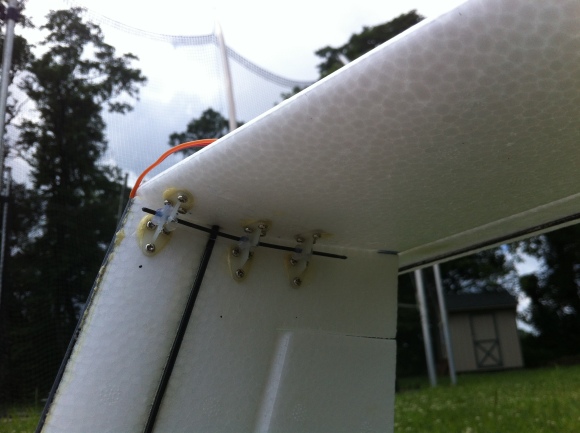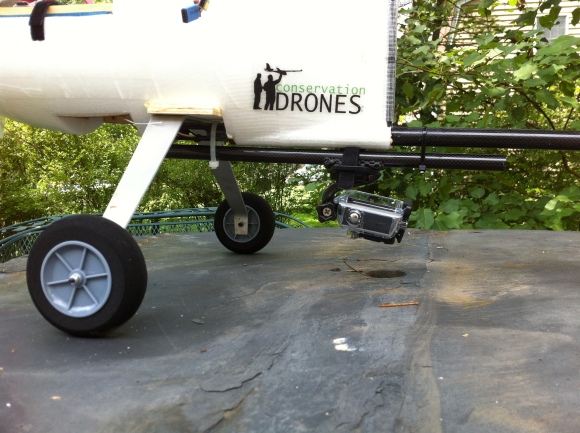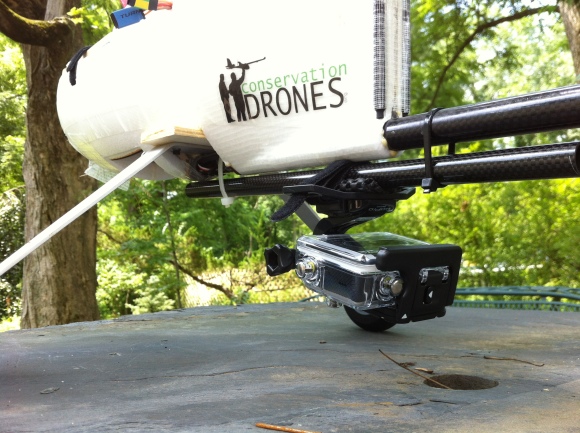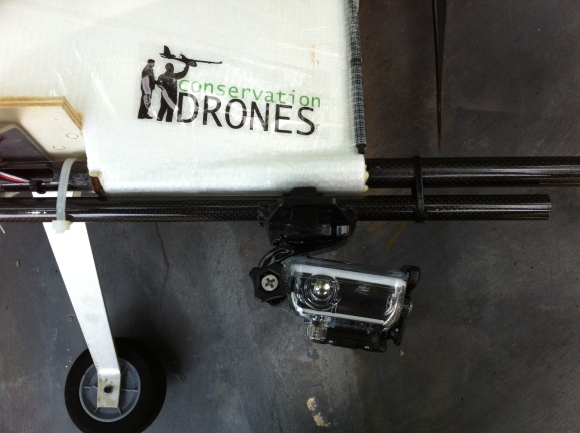
By Matthew Gryczan
Pity the poor drone. It suffers from the image problem as an ominous bird of prey looming overhead in spy operations or as a dealer in deadly force, the subject of congressional filibusters and news reports about terrorist raids.
But in reality, drones are being flown every day in Michigan and other states by colleges and universities, public safety agencies and entrepreneurs for much more benevolent purposes, such as covering the 2013 Chevrolet Detroit Belle Isle Grand Prix, assessing the recent flooding of the Grand River and creating a spectacular promotional video of the De Zwaan windmill in Holland.
It’s inevitable that the use of drones in aerial photography will take off in Michigan in the near future because it provides customized aerial shots for as little as $100 — a fraction of the cost of photos taken by businesses that rely on manned helicopters and airplanes.
As they continue to become easier to fly and drop in price, drones are expected to be embraced by anyone who wants an eye in the sky — farmers who want to know where crops need water or fertilizer, companies that want to inspect equipment in hard-to-reach places and videographers who want to get stunning shots of subjects on the cheap.
“Think about how tall a cell tower is,” said Chris Bergen, owner of Bergen R/C Helicopters in Cassopolis, which builds manually controlled craft and drones — also euphemistically called “unmanned aerial vehicles.” “I’ll be damned if you would get me to climb that frickin’ tower to inspect it. I’ll fly my multicopter up there to take pictures or video of it instead.”
For instance, Michigan Technological University in Houghton uses several of Bergen’s “birds” on behalf of the Michigan Department of Transportation to assess which dirt roads in the state are rife with potholes and ruts, then calculate how much fill would be needed to smooth them over.
“I laugh at the nightly news when they talk about these drones,” Bergen said, “because none of this is new.”
In a holding pattern
Bergen’s business and others, such as EAI LLC in Grand Rapids and Northwestern Michigan Collegein Traverse City, are eagerly waiting for the floodgates to open for the commercial use of drones. At this point, the potentially high-flying industry is grounded by the reluctance of the Federal Aviation Administration to permit the commercial use of drones until the agency can issue regulations on their operation.
Les Door, an FAA spokesman, said his agency expects to propose regulations on the operation of small unmanned aerial vehicles, or UAVs, by the end of this year. But he cautioned that those regulations also need to go through a public comment period and further consideration before potential implementation.
Until then, permitted drone use is limited to experimentation by universities and public entities. As of February, the FAA had issued 327 certificates of authorization or waiver allowing noncommercial drone flights nationally. Under-the-radar businesses that use drones to shoot video or photos for customers and take compensation are unaware of or ignoring the FAA prohibition or think it doesn’t apply to their situation.
As one such business, EAI has taken video of homes, businesses and events around Grand Rapids; Holland; Hudsonville; the Grand Prix races at Belle Isle; Walloon Lake; Elk Rapids; Atlanta, Mich.; and locations in North Carolina and Florida. The company, started last year by Tommy Knight and Eric Snyder, posted a demo video on YouTube in February that has stunning shots of what is possible using the technology.
Knight said the CineStar8 multirotor helicopter that they built from a kit can carry an 8-pound payload for more than 10 minutes — more than enough lifting power to carry a high-definition video camera. The company that makes a line of CineStar8 heavy-lifting multirotor drones advertises that a basic kit costs about $3,600 for one that’s 3 feet in diameter.
But the advent of drones such as the CineStar8 have become a Pandora’s box for aviation, largely because a growing number of entrepreneurs are now finding compelling business reasons to invest in radio-controlled aircraft that before had been the purview of a small group of hobbyists.
And while a UAV may be small, it still can pose a significant hazard for aircraft if flown recklessly, Door said.
Parrot SA reported last year that it had sold more than 300,000 multirotor helicopters called AR.Drones with imaging technology that can be controlled with a smartphone and can send images directly to an electronic tablet.
A report issued in March by the Association for Unmanned Vehicle Systems International estimated that the commercial use of drones would create more than 70,000 jobs in the United States and a total economic impact of $13.6 billion by 2018 if they are integrated into the national airspace by the 2015 deadline for regulations imposed by Congress on the FAA. Michigan would see an estimated $94 million of impact during this period, according to the Arlington, Va.-based trade group, which represents about 600 corporations and 7,000 individuals involved in the manufacture and operation of ground, sea and air drones.
No special skills necessary
Bergen has had a ringside seat in the transition of the radio-controlled aircraft market during the past 20 years from a small cadre of people who spent months learning how to fly radio-controlled helicopters for industrial and military applications to entrepreneurs looking to make money with much easier-to-fly equipment. His company employs four full-time people in the manufacture of UAVs that can range from a small electric octocopter with eight rotors equally spaced in a 3-foot diameter to a turbine-powered helicopter with a wingspan diameter of 7 feet.
Bergen’s father, Larry, started the company in the 1980s as a machine shop that eventually made parts for radio-controlled helicopters. Bergen joined the business after he received an honorable discharge in 1991 after eight years of service in the U.S. Army as a flight engineer for Chinook helicopters. He bought the assets of the business in 1999.
“At that time, a lot of colleges and universities were developing auto-pilot systems for helicopters,” Bergen said. “They needed a test bed to work out their programming and algorithms, sensors and electronic components, and they needed aircraft that could carry the weight of all these components. Our products fit the bill.”
While he still makes the Turbine Observer radio-controlled helicopter, which can stay aloft for 30 minutes with a 10-pound camera on its nose, the real growth area is smaller, multirotor craft that have auto-pilot features and don’t require nearly the same amount of skill to fly.
The degree of onboard automation helps distinguish a drone from radio-controlled craft that can only be manually controlled.
“We try not to use the ‘D’ word around here because it has a negative connotation across the general public right now,” said Tony Sauerbrey, manager of the unmanned aerial systems program at Northwestern Michigan College. “They typically think it’s a mindless flying robot that you turn on and it goes off and flies its mission without human involvement.”
Sauerbrey said UAV pilots at the college can set altitudes and program a flight plan with point-and-click software, but they still supervise the flight operations and have the ability to take over manually if the occasion arises.
Everyone expects the drone market to rise exponentially with the recent advances in automation.
“We gave a (radio-controlled helicopter) demonstration to the Georgia State Patrol six or seven years ago, and they initially wanted these craft in every one of their barracks across the state,” Bergen said. “But it didn’t happen when they saw how much time it takes to learn to fly. It can be a year or more of learning how to fly (radio-controlled) helicopters, making it cost-prohibitive.
“But now with these new multirotors, we are getting law enforcement to take a second look at it because I can teach someone to fly a multirotor literally in minutes.”
Under the radar
Technically, anyone who flies drone missions for money is doing so without the permission of the FAA, which is charged with maintaining the safety of the nation’s airspace. The federal agency permits hobbyists to fly model aircraft under 400 feet of altitude and away from airports and populated areas. When it discovers commercial drone operations, it issues cease-and-desist letters and warnings about potential $10,000 fines per flight.
But it is clear that the FAA doesn’t have the resources to tightly enforce the prohibition when the technology is already in the hands of so many people and has been used for years with radio-controlled aircraft. One Indianapolis television station reported that the FAA has launched 23 investigations of unauthorized drone flights during the past two years, resulting in warning letters to 10 operators nationwide. Complaints of unauthorized drone use are on the rise.
Initially, the owners of EAI were interested in talking with Crain’s about commercial applications for their drone, but they declined further comment after they visited Sauerbrey and issued a statement that they only operated their craft in short ranges where they can be seen. EAI stated that it had several restrictions on taking images of subjects, such as a distance of more than five miles from a G-class airfield, wind under 15 mph, altitudes under 200 feet and clear and open airspaces.
Bergen and Sauerbrey said the FAA is working diligently to come up with regulations, but the agency has been somewhat stymied by the considerable variation in drone styles, which can range from a Boeing 737 to a model airplane.
Northwestern Michigan College offers several classes on UAV uses and operation under its current FAA certification, with the anticipation that it will be well-situated to provide training to get a UAV pilot’s license when requirements are defined.
“We are a little bit ahead of our time, so to speak, with anticipating the market,” Sauerbrey said of his program, an outgrowth of NMC’s manned aircraft training, offered for the past 40 years. “But we think this is going to be a very large part of aviation going forward.”
While the threat of a $10,000 fine can have a chilling effect on setting up a large-scale commercial drone enterprise, the sheer ratio of potential violators to FAA inspectors makes enforcement difficult, Bergen said.
“When I worked for Delta Airlines down in Atlanta, Georgia, I used to see FAA inspectors quite often,” Bergen said. “I don’t know about you, but around here I haven’t seen too many FAA inspectors.”
http://www.crainsdetroit.com/article/20130707/NEWS/307079980/drone-industry-set-to-soar-when-faa-gives-nod





